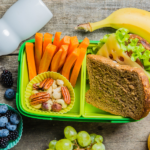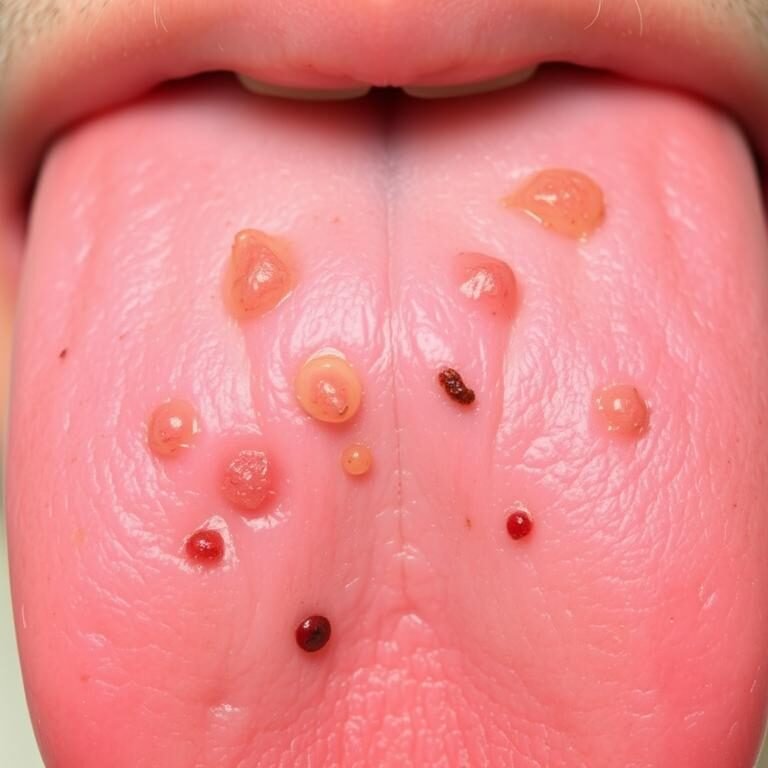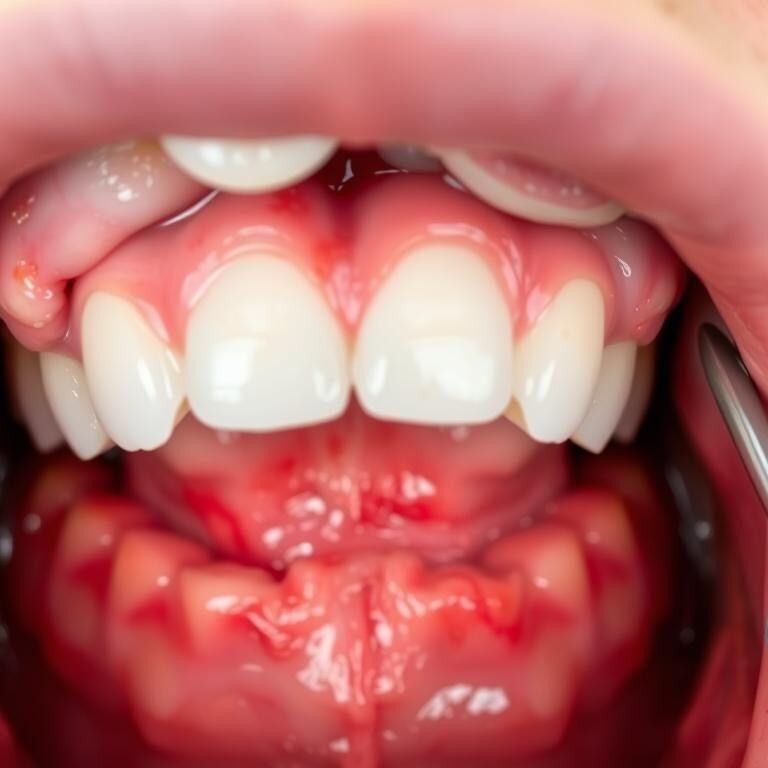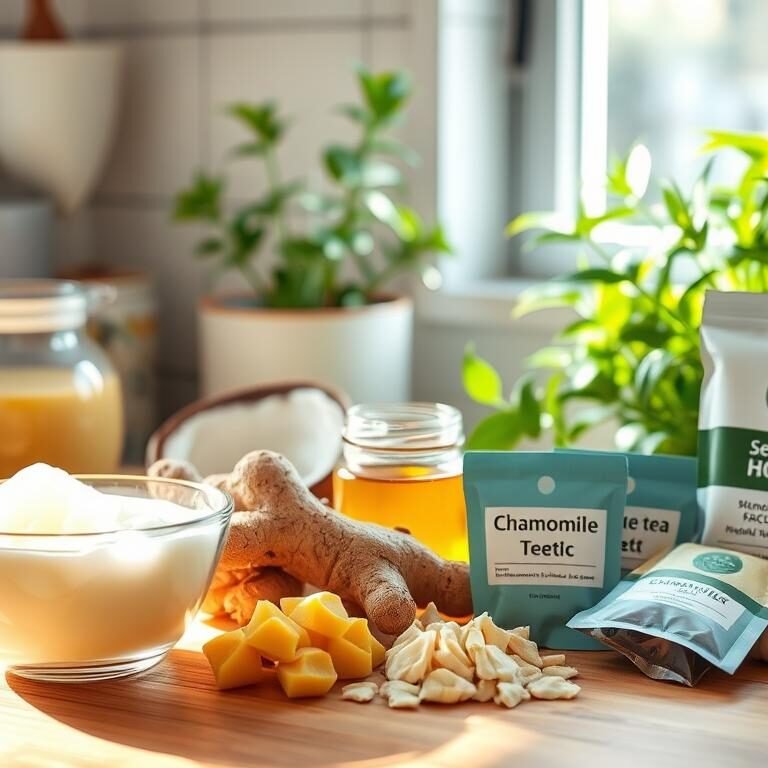Table of Contents
Benefits of Packing a Tooth-Friendly Lunch
Packing a tooth-friendly lunch for yourself or your child can bring numerous benefits to oral health. By selecting foods that are low in sugar and acidity, you can help prevent tooth decay and cavities. Opting for nutrient-rich options like fruits, vegetables, and dairy products can provide essential vitamins and minerals that promote overall dental well-being.

Additionally, incorporating crunchy fruits and vegetables into your lunch can help naturally clean teeth and stimulate saliva production, which aids in neutralizing acids and remineralizing enamel. By making thoughtful choices in meal planning, you not only contribute to better oral health but also set a positive example for good dietary habits that can benefit long-term wellness.
Importance of Choosing Nutrient-Rich Foods
Choosing nutrient-rich foods is essential for maintaining optimal oral health. Nutrient-rich foods provide vital vitamins and minerals that support healthy teeth and gums. For example, foods high in calcium, such as dairy products, help strengthen tooth enamel, while fruits and vegetables rich in vitamin C promote healthy gums. Including a variety of nutrient-dense foods in your lunch not only benefits your oral health but also contributes to your overall well-being.

Incorporating nutrient-rich foods into your meals can also help reduce the risk of developing dental issues such as cavities and gum disease. By choosing foods that are low in added sugars and refined carbohydrates, you can help prevent plaque buildup and maintain a healthy pH balance in your mouth. Opting for whole grains, lean proteins, and fresh produce can provide the nutrients your teeth and gums need to stay strong and resilient. Prioritizing nutrient-rich foods in your lunch choices is a proactive way to support your oral health for the long term.
Avoiding Sugary and Acidic Snacks
When it comes to maintaining optimal oral health, steering clear of sugary and acidic snacks is paramount. Sugary snacks provide an ideal environment for harmful bacteria in the mouth to thrive and produce acids that weaken tooth enamel, leading to cavities and tooth decay. Likewise, acidic snacks can erode the protective layer of enamel on teeth, making them more susceptible to damage and sensitivity. By avoiding these types of snacks, you can safeguard your dental health and prevent common oral issues associated with excessive sugar and acidity consumption.
Opting for tooth-friendly alternatives such as crunchy fruits and vegetables can not only satisfy your snack cravings but also promote saliva production, which helps neutralize acids and remineralize enamel. Incorporating these healthier options into your diet can also provide essential vitamins and minerals that support overall oral health. By making informed choices and prioritizing nutrient-rich snacks over sugary and acidic ones, you can take proactive steps towards preserving your smile and enjoying lasting dental wellness.
Incorporating Crunchy Fruits and Vegetables
When it comes to packing a tooth-friendly lunch, incorporating crunchy fruits and vegetables can be a game-changer for both dental health and overall well-being. These fiber-rich foods not only help in cleaning the teeth naturally but also stimulate saliva production, which aids in neutralizing acids and preventing tooth decay. Opting for snacks like apples, carrots, celery, and cucumbers can not only satisfy cravings but also promote oral health by reducing plaque buildup and freshening breath.
In addition to their dental benefits, crunchy fruits and vegetables provide essential vitamins and minerals that are vital for a growing child’s development. For instance, carrots are rich in vitamin A, which is crucial for maintaining healthy gums, while broccoli is packed with vitamin C, known for its role in gum health and collagen production. By including a variety of colorful and crunchy produce in your child’s lunchbox, you can ensure they receive a spectrum of nutrients that support their overall health and promote a balanced diet.
Including Dairy Products for Calcium
Dairy products are an essential component of a tooth-friendly lunch due to their rich calcium content. Calcium plays a crucial role in maintaining strong teeth and bones, making it a vital nutrient for overall oral health. Incorporating dairy options such as milk, yogurt, and cheese into meals can help support the development and maintenance of healthy teeth, reducing the risk of dental issues.

In addition to providing calcium, dairy products also contain phosphorus and casein, which are beneficial for dental health. Phosphorus works in conjunction with calcium to strengthen tooth enamel, while casein helps to neutralize acids in the mouth, reducing the risk of tooth decay. Including a variety of dairy options in lunch choices not only promotes calcium intake but also contributes to a well-rounded diet that supports optimal oral health.
Selecting Whole Grain Options for Fiber
When it comes to selecting whole grain options for fiber in your child’s lunch, it is important to prioritize nutrient-dense choices that provide not only essential fiber but also a range of vitamins and minerals crucial for their overall health. Whole grains such as brown rice, quinoa, barley, and whole wheat bread offer a rich source of fiber that aids in digestion and promotes satiety, helping to sustain energy levels throughout the day. Incorporating these whole grain options into your child’s lunch can also contribute to maintaining stable blood sugar levels, supporting their focus and concentration during school hours.
By including whole grain foods in your child’s lunch, you are not only promoting their physical well-being but also supporting their dental health. Whole grains require more chewing compared to refined grains, which can help stimulate saliva production and reduce the risk of cavities by neutralizing acids in the mouth. Additionally, the fiber content in whole grains can help in removing food particles and bacteria from teeth, contributing to better oral hygiene. Making conscientious choices when selecting whole grain options for your child’s lunch can have a positive impact on their dental health and overall well-being.
Opting for Water or Milk Instead of Sugary Drinks
Water and milk stand out as exemplary choices when considering beverages to accompany your meals. Water, being the universal solvent, not only helps in maintaining overall health but also plays a crucial role in maintaining oral hygiene. It washes away food particles and reduces the acidity levels in the mouth, which helps in preventing tooth decay. On the other hand, milk is a rich source of calcium and phosphorus, minerals essential for strengthening teeth and bones. Its low acidity levels make it a favorable choice over sugary drinks that can erode enamel and contribute to cavities.
When it comes to selecting a tooth-friendly drink, water emerges as the top contender due to its unmatched benefits for oral health. Its ability to hydrate the body, wash away debris, and maintain a neutral pH level in the mouth are all reasons why it is highly recommended by dental professionals. As for milk, its calcium content aids in remineralizing tooth enamel, making it an excellent choice for promoting strong teeth. By opting for water or milk instead of sugary drinks, you not only protect your teeth from harm but also contribute to your overall well-being.
Limiting Processed Foods and Snacks
Processed foods and snacks often contain high levels of added sugars, salt, and unhealthy fats, which can be detrimental to oral health. Excessive consumption of these items can contribute to tooth decay, gum disease, and other oral health issues. Additionally, processed foods tend to lack essential nutrients that are vital for maintaining strong teeth and gums. By limiting the intake of processed foods and snacks, individuals can help protect their oral health and overall well-being.
Instead of reaching for processed snacks, individuals can opt for whole foods that are rich in vitamins, minerals, and antioxidants. Fruits, vegetables, nuts, seeds, and lean proteins are excellent alternatives to processed snacks, as they not only support good oral health but also provide essential nutrients for the body. By making conscious choices to reduce processed food consumption and incorporate more whole foods into daily meals and snacks, individuals can promote better oral health and contribute to their overall health and well-being.
Making Homemade Snack Packs and Bento Boxes
When it comes to making homemade snack packs and bento boxes for a tooth-friendly lunch, creativity and planning are key. These convenient meal options offer an excellent opportunity to include a variety of nutrient-rich foods that promote dental health. By thoughtfully packing a balanced assortment of fruits, vegetables, whole grains, and dairy products, you can ensure that your child receives essential vitamins and minerals while also supporting their oral hygiene.
Incorporating colorful and flavorful ingredients not only makes homemade snack packs and bento boxes visually appealing but also helps to engage children in healthy eating habits. By involving your child in the preparation process, you can empower them to make nutritious choices and develop a positive relationship with food. Additionally, by including crunchy fruits and vegetables that require chewing, you can stimulate saliva production, which aids in neutralizing acids and preventing tooth decay.
Considering the Timing of Meals and Snacks
Meal timing plays a crucial role in maintaining optimal oral health. It is essential to space out meals and snacks appropriately throughout the day to prevent prolonged exposure of teeth to harmful bacteria and acids. By allowing an adequate interval between eating episodes, you give the saliva in your mouth sufficient time to neutralize acids, repair enamel, and protect against tooth decay.
| Meal/Snack | Recommended Timing | Description |
|---|---|---|
| Breakfast | Within 1-2 hours of waking up | Breaks the overnight fast, provides energy for the morning, and helps regulate blood sugar levels. |
| Mid-morning snack (optional) | 2-4 hours after breakfast | Provides sustained energy and helps prevent overeating at lunch. Focus on healthy options like fruits, vegetables, or nuts. |
| Lunch | 4-6 hours after breakfast | Provides energy for the afternoon and helps maintain blood sugar levels. Aim for a balanced meal with protein, carbohydrates, and healthy fats. |
| Afternoon snack (optional) | 2-4 hours after lunch | Similar to the mid-morning snack, helps maintain energy levels and prevents overeating at dinner. Choose healthy options like yogurt, cottage cheese, or whole-grain crackers with vegetables. |
| Dinner | 4-6 hours after lunch | Provides fuel for the evening and helps with sleep regulation. Aim for a lighter meal than lunch and avoid heavy or processed foods. |
Moreover, choosing the right timing for meals and snacks can also positively impact overall health. Eating at regular intervals helps regulate metabolism, stabilize blood sugar levels, and promote proper digestion. By incorporating a well-planned eating schedule into your daily routine, you not only support your oral health but also contribute to a balanced and healthy lifestyle.
Encouraging Proper Oral Hygiene Habits After Eating
After eating, it is essential to prioritize proper oral hygiene habits to maintain optimal dental health. Brushing your teeth with fluoride toothpaste for at least two minutes helps remove food particles, plaque, and bacteria that can lead to tooth decay and gum disease. It is recommended to brush your teeth gently in a circular motion to ensure thorough cleaning of all tooth surfaces, including the back molars and along the gum line. Additionally, using a soft-bristled toothbrush and replacing it every three to four months or sooner if the bristles appear frayed is crucial for effective plaque removal and gum health.
In addition to brushing, incorporating flossing into your oral care routine is vital for removing debris and plaque from between teeth where toothbrush bristles may not reach. Daily flossing helps prevent cavities, gingivitis, and bad breath by disrupting bacterial growth and maintaining the health of the gums. When flossing, it is important to gently glide the floss between the teeth, curve it around each tooth in a C shape, and move it up and down to clean the sides of the teeth thoroughly. Proper technique and consistency in brushing and flossing after meals contribute significantly to maintaining a healthy smile and preventing oral health issues in the long term.
Seeking Dental Advice for Individualized Tips
When it comes to creating tooth-friendly lunches for yourself or your children, seeking dental advice can provide valuable personalized tips. A dental professional can offer insights tailored to your specific oral health needs and concerns, helping you make informed choices that promote dental well-being. By consulting with a dentist, you can receive guidance on selecting the most suitable foods and beverages to include in your lunches, as well as tips on proper oral hygiene practices to follow after meals. This individualized advice can contribute to maintaining strong and healthy teeth, supporting overall oral health in the long run.
In addition to offering personalized recommendations, dental professionals can also advise on potential risks to oral health and strategies for minimizing them through dietary choices and hygiene habits. Understanding how certain foods and drinks can impact teeth and gums is essential for making informed decisions when planning meals and snacks. Dental consultation plays a crucial role in promoting preventive oral care, empowering individuals to prioritize their dental health through conscious dietary and lifestyle choices. By seeking dental advice for individualized tips, you can take proactive steps toward a healthier smile and improved overall well-being.
Exploring Creative and Fun Lunch Ideas
When it comes to creating creative and fun lunch ideas for your children, incorporating a variety of colorful and nutritious foods can make mealtime exciting and enjoyable. Consider making a rainbow-inspired meal with different fruits and vegetables of various hues to appeal to your child’s visual senses. Additionally, involving your child in the meal preparation process can foster a sense of ownership and encourage them to try new foods. Try arranging the food in fun shapes or patterns to add an element of playfulness to their lunch.
| Theme | Lunch Idea | Description |
|---|---|---|
| World Flavors | Rainbow Veggie Wraps with Hummus: | Spread hummus on a whole-wheat tortilla, add colorful bell peppers, shredded carrots, cucumber slices, and fresh herbs. Roll up and enjoy! |
| Mini Sushi Bowls: | Cook brown rice and top with shredded vegetables, cooked salmon or tofu, pickled ginger, and a drizzle of soy sauce. | |
| Mediterranean Pita Pockets: | Fill pita bread with crumbled feta cheese, sliced olives, chopped tomatoes, cucumbers, and a drizzle of olive oil. | |
| Chicken Tikka Masala Wraps: | Cook cubed chicken with tikka masala sauce. Warm a tortilla, spread yogurt sauce, add chicken, chopped cucumber, and fresh cilantro. | |
| Falafel Pita with Tahini Sauce: | Enjoy crispy falafel balls in a pita with chopped vegetables, tahini sauce, and a sprinkle of sumac. | |
| Deconstructed Favorites | Taco Salad: | Season ground beef with taco seasoning and cook. Combine chopped lettuce, tomatoes, shredded cheese, corn, black beans, and your favorite taco toppings in a bowl. Add cooked taco meat and enjoy! |
| Pizza Bagel Bites: | Spread pizza sauce on bagel halves, top with shredded cheese, pepperoni or other desired toppings, and bake until golden brown. | |
| Charcuterie Lunch Board: | Arrange sliced meats, cheeses, grapes, crackers, olives, and other finger foods on a platter for a fun and customizable lunch. | |
| Soup and Sandwich Bar: | Choose a variety of ingredients like different breads, cheeses, meats, vegetables, and spreads to create your own personalized sandwich. Pair it with a homemade or store-bought soup for a satisfying meal. | |
| Make-Your-Own Sushi Bar: | Cook sushi rice and prepare various fillings like cucumber, avocado, shredded carrots, cooked salmon, and tofu. Lay out nori sheets, fillings, and dipping sauces like soy sauce and wasabi. Let everyone assemble their own sushi rolls! | |
| Sweet & Savory | Apple Slices with Cheddar Cheese: | A classic, simple, and satisfying combination. |
| Hummus & Veggie Skewers: | Thread cherry tomatoes, bell pepper cubes, cucumber slices, and olives onto skewers. Serve with hummus for dipping. | |
| Ants on a Log: | Spread peanut butter or almond butter on celery sticks and top with raisins. | |
| Trail Mix with Greek Yogurt: | Combine your favorite nuts, seeds, dried fruit, and whole-grain cereal with a scoop of Greek yogurt for a delicious and nutritious lunch. |
Another way to make lunchtime engaging is by introducing themed lunches based on your child’s interests or favorite characters. This can make mealtime feel like a special occasion and can also be a great way to introduce new foods that fit within the theme. Including small surprises like notes or stickers in their lunchbox can also add an element of excitement and anticipation to their midday meal. By incorporating creativity and fun into your child’s lunches, you can not only promote healthy eating habits but also make mealtime a positive and enjoyable experience for them.
Emphasizing the Role of Balanced Nutrition
A balanced nutrition plays a crucial role in maintaining overall health and well-being, including dental health. When it comes to oral health, it’s essential to focus on a diet that provides essential nutrients to support healthy teeth and gums. By incorporating a variety of food groups into your meals and snacks, you can help prevent dental issues and promote proper oral hygiene habits.
Foods rich in calcium, such as dairy products, are vital for strengthening tooth enamel and supporting jawbone health. Additionally, crunchy fruits and vegetables not only provide essential vitamins and minerals but also help to naturally clean teeth and stimulate saliva production, which aids in neutralizing harmful acids in the mouth. By making thoughtful choices in your diet and considering the nutritional value of the foods you consume, you can enhance your oral health and contribute to a brighter smile for years to come.
Promoting Overall Health and Well-Being Through Tooth-Friendly Lunches
When it comes to promoting overall health and well-being, incorporating tooth-friendly lunch options can play a key role in maintaining good oral hygiene and supporting general wellness. By selecting nutrient-rich foods such as crunchy fruits and vegetables, dairy products for calcium, and whole grain options for fiber, individuals can nourish their bodies while also benefiting their oral health. These choices not only provide essential vitamins and minerals but also aid in reducing the risk of tooth decay and gum disease.
Avoiding sugary and acidic snacks, opting for water or milk instead of sugary drinks, and limiting processed foods can help safeguard dental health and contribute to a balanced diet. By making homemade snack packs and bento boxes, individuals can have greater control over their food choices and portion sizes, leading to healthier eating habits. Additionally, considering the timing of meals and snacks, as well as practicing proper oral hygiene after eating, can further enhance the benefits of tooth-friendly lunches for overall well-being.
Why is it important to consider the timing of meals and snacks in relation to oral health?
Timing plays a key role in oral health as frequent snacking throughout the day can increase the risk of tooth decay. It is best to space out meals and snacks to allow saliva to naturally wash away food particles and maintain a healthy pH level in the mouth.
How can homemade snack packs and bento boxes promote tooth-friendly lunches?
Homemade snack packs and bento boxes allow for more control over the ingredients included, making it easier to incorporate nutrient-rich foods, crunchy fruits and vegetables, and dairy products for calcium. This helps to support overall oral health and well-being.
What role does balanced nutrition play in promoting overall health and well-being through tooth-friendly lunches?
Balanced nutrition is essential for maintaining healthy teeth and gums. By including a variety of nutrient-rich foods in lunches, such as fruits, vegetables, dairy products, and whole grains, you can provide essential vitamins and minerals that support oral health and overall well-being.
How can dental advice help individuals customize their tooth-friendly lunch choices?
Seeking dental advice allows individuals to receive personalized tips and recommendations based on their specific oral health needs. A dentist can provide guidance on the best foods to include in lunches to promote healthy teeth and gums.












